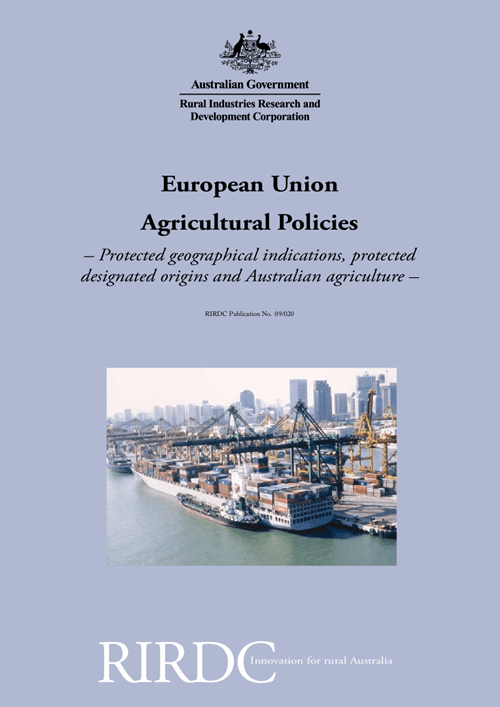Geographical indications provide an opportunity for EU agriculture to move away from highly intensive, environmentally damaging industries into ones that take advantage of traditional methods of production and which are more in keeping with the EU’s comparative advantage in agriculture. Provided these industries with their regional links develop in response to market forces with a minimum level of government involvement, a more efficient EU agriculture will be the result.
This report provides an overview of the geographical indication policy as developed in the European Union, describing the nature of the regulations, providing details of the products covered, and some of the effects of the policy. Through the provision of this RIRDC research, Australia’s agricultural industry will be better able to develop a response to the European Union strategy of establishing unique regional products.





